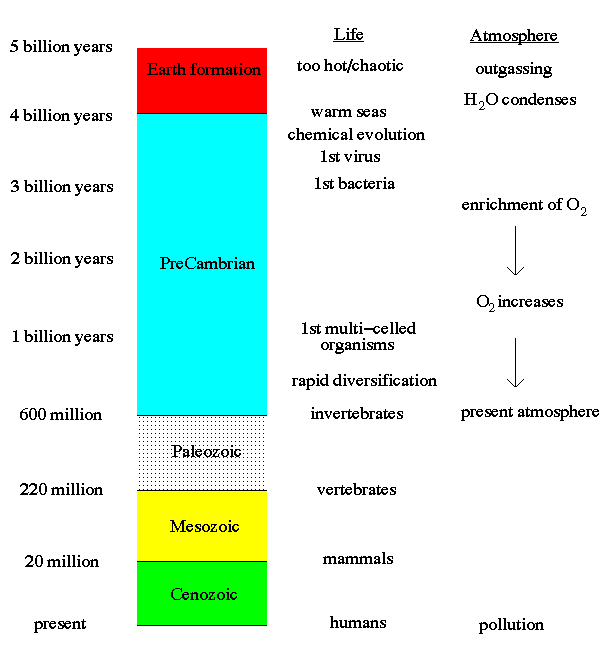
The Earth's crust became stable about 3.9 billion years ago. Life appeared around 3.6 to 3.9 billion years ago, which is quite fast in astronomical terms. Microfossils found in ancient rocks from Australia and South Africa demonstrate that terrestrial life flourished by 3.5 billion years ago. Older rocks from Greenland, 3.9 billion years old, contain isotopic carbon, carbon that could only have belonged to a living organism. The early atmosphere of the Earth was a secondary atmosphere from volcanic outgassing, very CO2-rich with little free O2.

Chemical Evolution:
Liquid water provides a universal solvent and warm environment for chemical evolution. It is a vehicle for dissolved substances (it circulates). And it provides the raw material for protein construction.
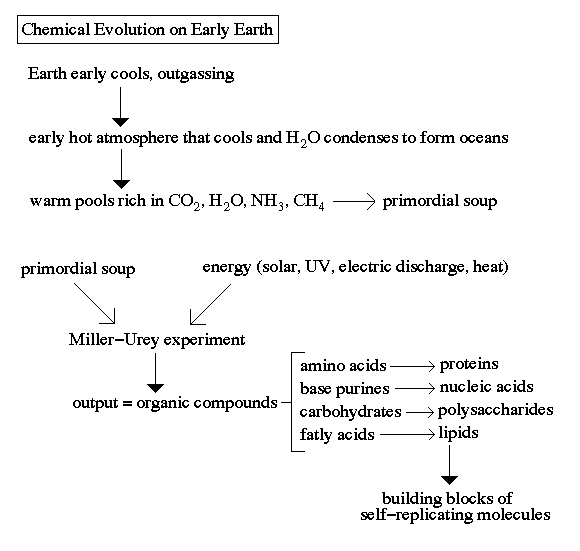
Amino acids are small, highly reactive molecules composed of 20 to 30 HCNO atoms. When amino acids link together in strings they form proteins. Proteins govern chemical reaction rates and form the structural material for cell parts.

With the construction of large macromolecules, such as proteins and nucleic acids, the Earth is poised for the next stage of biochemical evolution. Living organisms are the supreme example of active matter. They represent the most developed form of organized matter and energy that we know. They exemplify growth, adaptation, complexity, unfolding form variety and unpredictability. Almost appearing to be a class apart from matter and energy, defying the laws that enslave normal matter and energy.
Every organism is unique, both in form and development. Unlike physics where one studies classes of identical objects (e.g. electrons, photons), organisms are all individuals. Moreover, collections of organisms are unique, species are unique, the evolutionary history of the Earth is unique, the entire biosphere is unique. On the other hand, a cat is a cat, a cell is a cell, there are definite regularities and distinguishing features that permit organisms to be classified.
Each level of biology has new and unexpected qualities, qualities which cannot be reduced to the properties of the component parts, this is known as holism. A living organism consists of a large range of components differing greatly in structure and function (heart, liver, hair). Yet, the components are arranged and behave in a coherent and cooperative fashion as though to a common agreed plan. This endows the organism with a discrete identity, makes a worm a worm, a dog a dog.

A large number of complex chemical reactions is the underlying process that we call life. The ingredients for life are:

RNA and DNA are molecular codes for the production of proteins. They have the unique property of being self-replicating (when an RNA molecule splits, amino acids connect to the endpoints producing an exact copy of the original chain). The beginning of biochemical evolution was when RNA and DNA evolved to coat themselves in protein shells. These coated RNA and DNA packages are called a virus. A virus is halfway between life and non-life, being non-living when in isolation, but adapting living characteristics in interaction with other virus' or cells.
The next stage in biochemical evolution was for various virus' to take on specialized tasks (energy production, protein production, etc). These individual elements would combine to form the first cell. Our earliest evidence of cellular life comes from fossil bacteria.

With the development of cells, life took on an explosive evolution into more diverse forms, invading new environments (sea, lakes, land).
Photosynthesis:
Oxygen is a very small component to outgassing on the Earth, yet O2 is a significant fraction of our current atmosphere (thank goodness). Also note that O2 is highly reactive and combines quickly with rock and soil to form oxides (rust). Thus, the current amount O2 requires a constant process of replenishment. That process is photosynthesis.
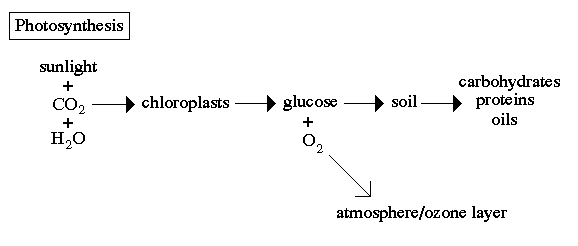

Evolution:
Biology as a science made its move from an Arisotitlean stage to a Newtonian one with the development of the theory of evolution. Evolution is a change in the gene pool of a population over time. A gene is a hereditary unit (the microscopic `atom') that can be passed on unaltered for many generations. The gene pool is the set of all genes in a species or population (the macroscopic `object').
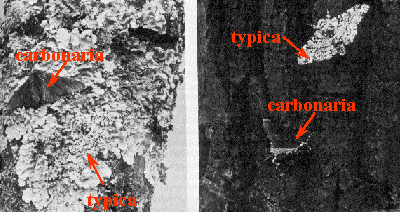
The English moth, Biston betularia, is a frequently cited example of observed evolution. In this moth there are two color morphs, light and dark (typica and carbonaria). H. Kettlewell found that dark moths constituted less than 2% of the population prior to 1848. Then, the frequency of the dark morph began to increase. By 1898, the 95% of the moths in Manchester and other highly industrialized areas were of the dark type, their frequency was less in rural areas. The moth population changed from mostly light colored moths to mostly dark colored moths. The moths' color was primarily determined by a single gene. So, the change in frequency of dark colored moths represented a change in the gene pool. This change was, by definition, evolution.
The increase in relative abundance of the dark type was due to natural selection. The late eighteen hundreds was the time of England's industrial revolution. Soot from factories darkened the birch trees the moths landed on. Against a sooty background, birds could see the lighter colored moths better and ate more of them. As a result, more dark moths survived until reproductive age and left offspring. The greater number of offspring left by dark moths is what caused their increase in frequency. This is an example of natural selection.
Populations evolve, not individuals. In order to understand evolution, it is necessary to view populations as a collection of individuals, each harboring a different set of traits. A single organism is never typical of an entire population unless there is no variation within that population. Individual organisms do not evolve, they retain the same genes throughout their life. When a population is evolving, the ratio of different genetic types is changing -- each individual organism within a population does not change. For example, in the previous example, the frequency of black moths increased; the moths did not turn from light to gray to dark in concert.
The process of evolution can be summarized in three sentences: Genes mutate. Individuals are selected. Populations evolve.
Thomas Malthus (1766-1834) was an English clergyman, whose writings on population growth had a strong influence on the theory of evolution by natural selection developed by Charles Darwin and Alfred Russel Wallace.
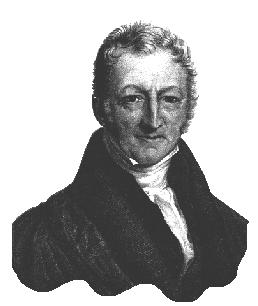
In An Essay on the Principle of Population (1797), Malthus observed that most organisms produce far more offspring than can possibly survive.
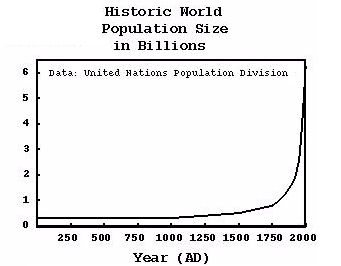
Evolution came of age as a science when Charles Darwin published "On the Origin of Species." Darwin's contributions include hypothesizing the pattern of common descent and proposing a mechanism for evolution -- natural selection.
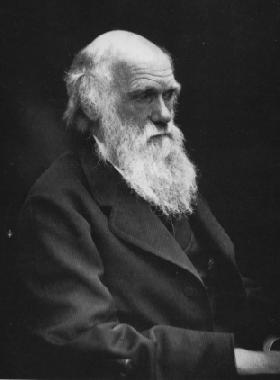
In Darwin's theory of natural selection, new variants arise continually within populations. A small percentage of these variants cause their bearers to produce more offspring than others. These variants thrive and supplant their less productive competitors. The effect of numerous instances of selection would lead to a species being modified over time.
Selection:
Some types of organisms within a population leave more offspring than others. Over time, the frequency of the more prolific type will increase. The difference in reproductive capability is called natural selection. Natural selection is the only mechanism of adaptive evolution; it is defined as reproductive success of classes of genetic variants in the gene pool.
Natural selection can be broken down into many components, of which survival is only one. Sexual attractiveness is a very important component of selection, so much so that biologists use the term sexual selection when they talk about this subset of natural selection. Sexual selection is natural selection operating on factors that contribute to an organism's mating success.

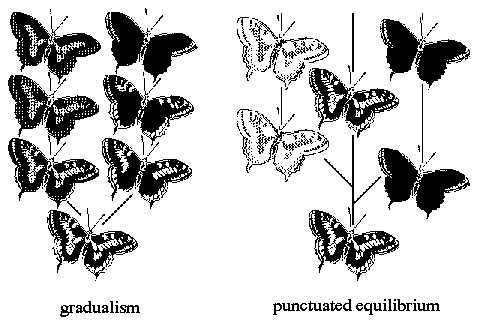
Human Evolution:
Most of human evolution involves physical evolution, cultural evolution plays a fairly minor role until the Upper Paleolithic, 40,000 years ago. Proto-humans, hominids, were constrained and directed by the same evolutionary pressures as the other organisms they shared the ecosystem with.
Around 13 million years ago, a tree-dwelling primate developed:


The idea that man evolved a large brain first was propagated for most of the 20th century by the famous Piltdown Hoax. When, in fact, most of the physical attributes of human form (upright walking, jaw and teeth structure, pelvic and leg formation) came before brain size evolved.
Our current idea of the human family tree is shown below, whose origins lie on the continent of Africa, then spread around the globe. We also know that every living human is the direct descendent of a single Homo Sapian woman who lived in Africa 150,000 years ago (i.e. Eve) based on the matching of DNA from cellular mitochondria in people around the world. Notice that our last common ancestor with apes is Australopithecus ramidus, about 5 million years ago. Also note that many species of Australopithecus and Homo are now extinct.
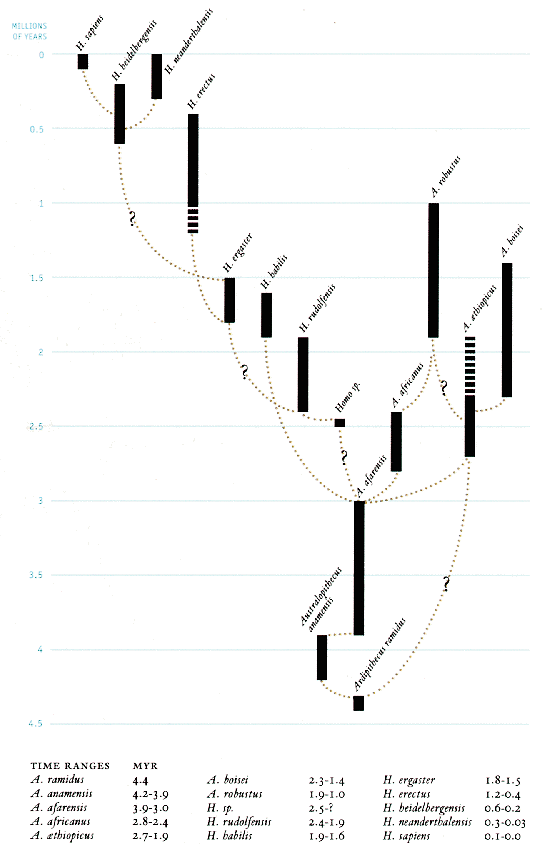
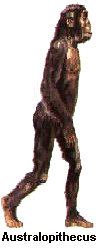
At the point where early Homo Sapian developed language a new form of evolution began. Normal evolution has inherited traits being transmitted by genes. So a bird knows how to build a nest due to inherited learning. However, language now allows the passing on of information by behavioral means, the process of learning and teaching. Although we humans are genetically equipped with basic biological imperatives, our sophisticated cultural behavior must be learned and language is the symbolic mode of communication that is associated with this learning.
The basic premise here is that culture has some advantage for the survival of our ancestors, therefore natural selection favors genes responsible for such behavior. DNA information only passes from individual to individual, but cultural evolution is active, incorporates a lifetime of teaching and can be passed from one individual to many. Cultural evolution, with its global nature, becomes the distinguishing characteristic of humans.
Is there Life Out There?
Perhaps the most important discovery humankind could ever make would be the discovery of life outside the Earth.
The search for life outside the Earth actually starts on the Earth with the investigation of meteors. Carbonaceous chondrites have been found to contain organic molecules, proteins and amino acids. Interestingly, there are equal numbers of left-handed and right-handed amino acids in meteors, whereas on the Earth all amino acids are left-handed. On the Earth this is due to the fact that chemical evolution eliminated all right-handed macromolecules. Thus, amino acids in meteors must represent samples from the early stages of the Solar System before chemical evolution.
Over 800 pounds of lunar soil was returned by the Apollo missions. All of it was tested for organic materials. The only carbon found was in carbide, CH4 or CO, no amino acids or proteins. The bombardment of the lunar surface by high energy particles probably prevents the formation of macromolecules, and breaks down the ones from earlier times.
The Viking mission placed two landers on Mars, each containing three experiments to search for life:

Fermi's Paradox (i.e. Where are They?):
The story goes that, one day back on the 1940's, a group of atomic scientists, including the famous Enrico Fermi, were sitting around talking, when the subject turned to extraterrestrial life. Fermi is supposed to have then asked, "So? Where is everybody?" What he meant was: If there are all these billions of planets in the universe that are capable of supporting life, and millions of intelligent species out there, then how come none has visited earth? This has come to be known as The Fermi Paradox. Fermi realized that any civilization with a modest amount of rocket technology and an immodest amount of imperial incentive could rapidly colonize the entire Galaxy. Within a few million years, every star system could be brought under the wing of empire. A few million years may sound long, but in fact it's quite short compared with the age of the Galaxy, which is roughly ten thousand million years. Colonization of the Milky Way should be a quick exercise.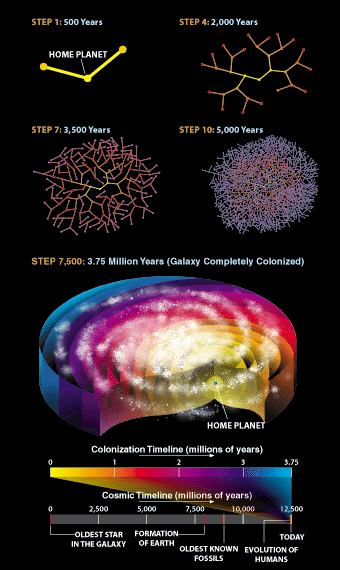
So what Fermi immediately realized was that the aliens have had more than enough time to pepper the Galaxy with their presence. But looking around, he didn't see any clear indication that they're out and about. This prompted Fermi to ask what was (to him) an obvious question: "where is everybody?"
While interstellar distances are vast, perhaps to vast to be conquered by living creatures with finite lifetimes, it should be possible for an advanced civilization to construct self-reproducing, autonomous robots to colonize the Galaxy. The idea of self-reproducing automaton was proposed by mathematician John von Neumann in the 1950's. The idea is that a device could 1) perform tasks in the real world and 2) make copies of itself (like bacteria). The fastest, and cheapest, way to explore and learn about the Galaxy is to construct Bracewell-von Neumann probes. A Bracewell-von Neumann probe is simply a payload that is a self-reproducing automaton with an intelligent program (AI) and plans to build more of itself.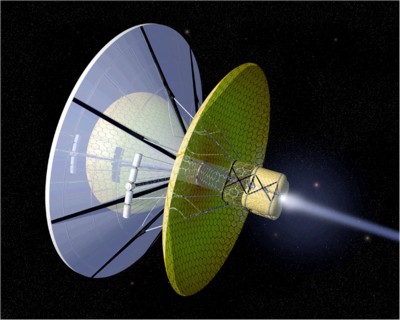
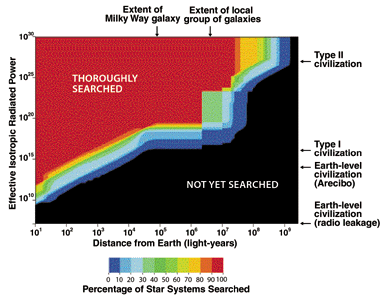
This sounds a bit silly at first. The fact that aliens don't seem to be walking our planet apparently implies that there are no extraterrestrial anywhere among the vast tracts of the Galaxy. Many researchers consider this to be a radical conclusion to draw from such a simple observation. Surely there is a straightforward explanation for what has become known as the Fermi Paradox. There must be some way to account for our apparent loneliness in a galaxy that we assume is filled with other clever beings.
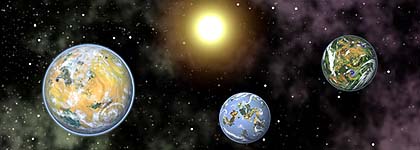
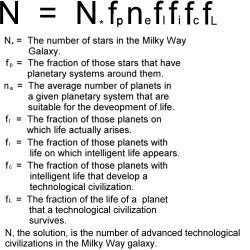
In general, solutions to Fermi's paradox come down to either 1) life is difficult to start and evolve (either hard for the process or hard to find the right conditions) or 2) advanced civilzations destroy themselves on short timescales. In other words, this is an important problem to solve in the hope that it is 1 and not 2.

|
|

|